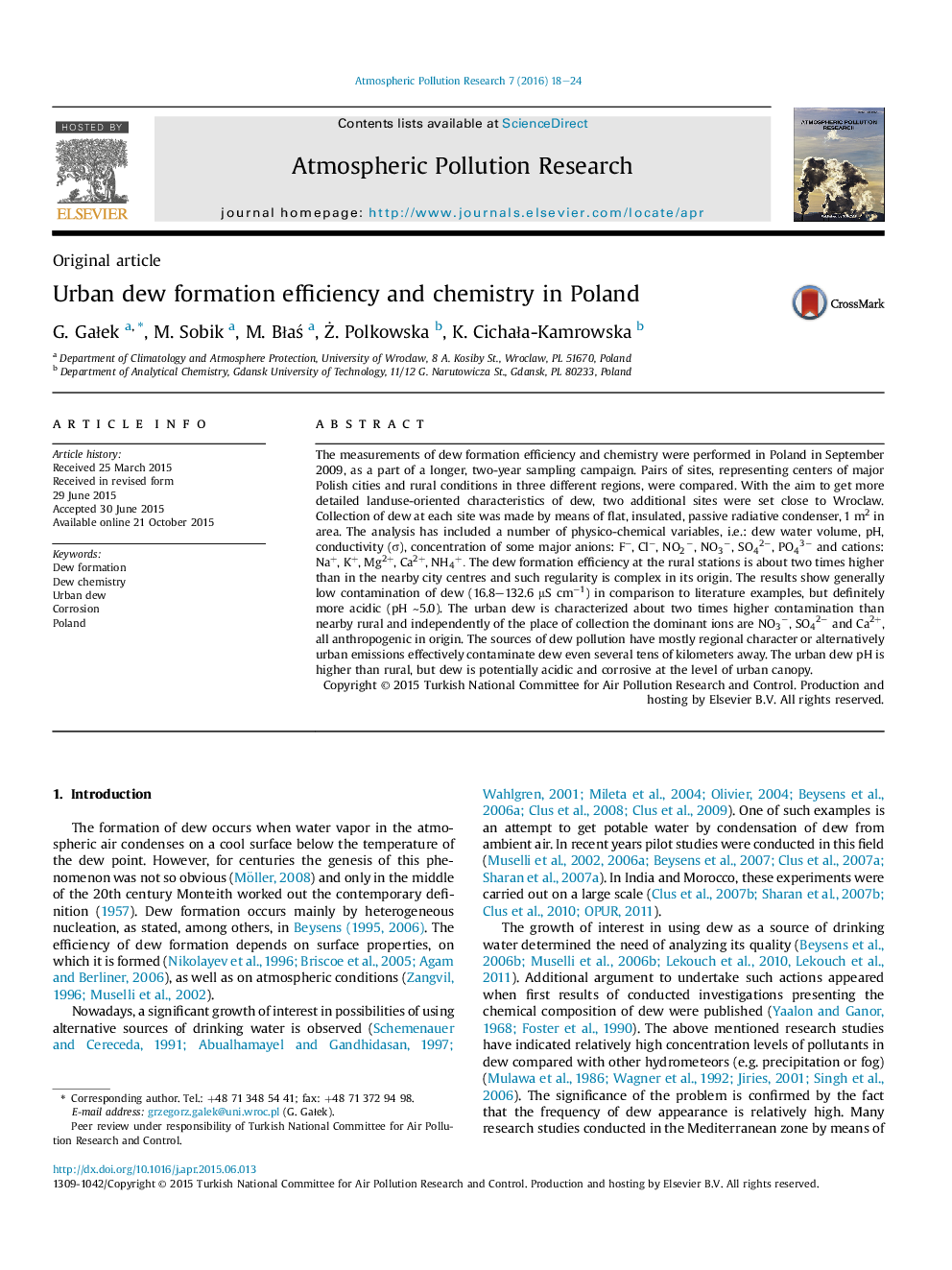| Article ID | Journal | Published Year | Pages | File Type |
|---|---|---|---|---|
| 4434701 | Atmospheric Pollution Research | 2016 | 7 Pages |
The measurements of dew formation efficiency and chemistry were performed in Poland in September 2009, as a part of a longer, two-year sampling campaign. Pairs of sites, representing centers of major Polish cities and rural conditions in three different regions, were compared. With the aim to get more detailed landuse-oriented characteristics of dew, two additional sites were set close to Wroclaw. Collection of dew at each site was made by means of flat, insulated, passive radiative condenser, 1 m2 in area. The analysis has included a number of physico-chemical variables, i.e.: dew water volume, pH, conductivity (σ), concentration of some major anions: F−, Cl−, NO2−NO2−, NO3−NO3−, SO42−SO42−, PO43−PO43− and cations: Na+, K+, Mg2+, Ca2+, NH4+.NH4+. The dew formation efficiency at the rural stations is about two times higher than in the nearby city centres and such regularity is complex in its origin. The results show generally low contamination of dew (16.8–132.6 μS cm−1) in comparison to literature examples, but definitely more acidic (pH ∼5.0). The urban dew is characterized about two times higher contamination than nearby rural and independently of the place of collection the dominant ions are NO3−NO3−, SO42−SO42− and Ca2+, all anthropogenic in origin. The sources of dew pollution have mostly regional character or alternatively urban emissions effectively contaminate dew even several tens of kilometers away. The urban dew pH is higher than rural, but dew is potentially acidic and corrosive at the level of urban canopy.
